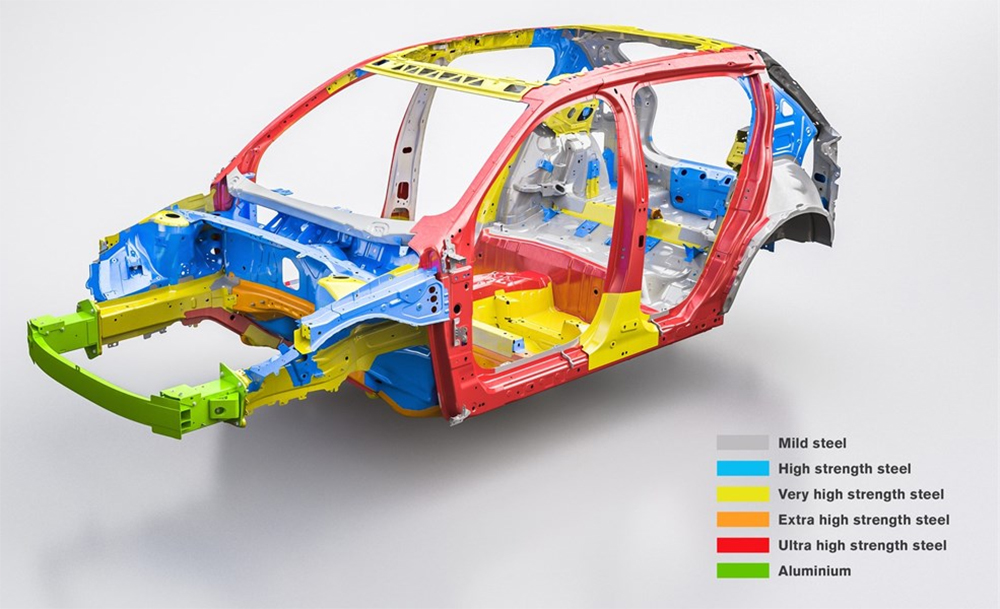Volvo’s new XC40 small SUV has been named the 2018 European Car of the Year ahead at the Geneva Motor Show. The vehicle makes significant use of advanced high strength steels (AHSS) including hot-formed boron grades, the strongest automotive steel available today.
The XC40’s safety cage relies on AHSS, including ultra-high strength boron grades, to provide maximum occupant protection in all types of crash scenarios. Ultra-high strength boron grades account for 20 percent of the car’s total body weight. The use of the ultra high strength boron steel in the XC40 is part of Volvo’s overall commitment to safety. This is outlined in the company’s Vision 2020 statement that no one should be killed or seriously injured in a new Volvo car by 2020.
In awarding the Car of the Year to the XC40, the jury noted that: “As [with] any other Volvo, the XC40 is well equipped for passive safety as standard.”

The hot-formed boron steel in the XC40 helps to protect occupants in the event of an accident
“We have a clear strategy for growth and we are committed to leading in automotive safety, connectivity services, and electrification,” says Håkan Samuelsson, President and CEO of Volvo Cars. “The XC40 reflects that commitment, and looking at the response from our customers and from the Car of the Year jury, we are on the right track.”
The XC40 is the first model based on Volvo Cars’ new compact modular vehicle architecture (CMA). The architecture will underpin all upcoming cars in the 40 series, including fully electrified vehicles. Hybrid and pure electric powertrain options for the XC40 will be added later.
The 2018 European Car of the Year award follows other recent recognition for the XC40, including the Car of the Year award from the UK’s leading automotive publication What Car?


